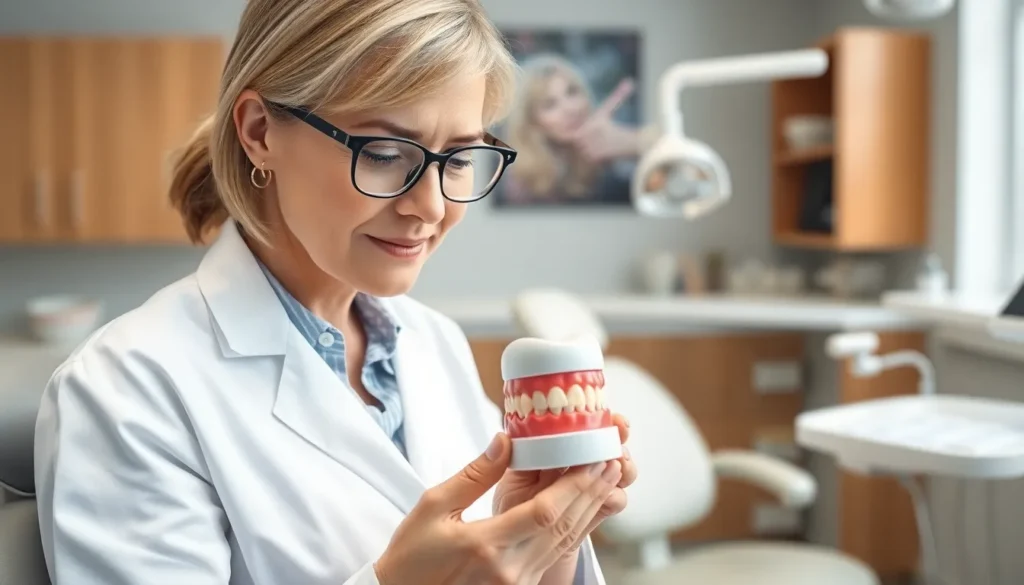Wondering about the difference between dental inlays and crowns? These common dental restorations serve similar purposes but vary significantly in application, cost, and longevity.
When facing tooth damage from decay or injury, you’ll likely encounter these two treatment options. Inlays fit within the cusps of your tooth, while crowns completely cover the visible portion above the gum line. Your dentist’s recommendation will depend on the extent of damage, your budget, and long-term oral health goals. Understanding the distinctions between these treatments will help you make an well-informed choice about your dental care.
Understanding Dental Restorations: Inlays and Crowns
Dental restorations repair damaged teeth to restore their function, strength, and appearance. Among these treatments, inlays and crowns represent two distinct approaches for addressing tooth damage.
Inlays fit precisely within the cusps (raised points) of your tooth, filling cavities or damaged areas while preserving more of your natural tooth structure. These custom-made restorations are created in a dental laboratory from materials like porcelain, gold, or composite resin that match your natural tooth color.
Crowns, often called caps, cover the entire visible portion of your tooth above the gum line. They’re recommended for teeth with extensive damage, large fillings, or after root canal therapy. A crown completely encases the damaged tooth, providing maximum protection and reinforcement.
“I recently had a patient who was torn between an inlay and crown for her molar with moderate decay,” shares Dr. Todd B. Harris. “After discussing her exact needs and examining the extent of damage, we opted for an inlay since it preserved more of her healthy tooth structure while effectively restoring function. She’s been thrilled with both the aesthetic result and how natural it feels when chewing.”
The primary differences between these restorations include:
- Coverage: Inlays fit within the tooth cusps; crowns cover the entire visible portion
- Tooth preservation: Inlays require less tooth reduction; crowns need important reshaping
- Strength: Crowns provide maximum reinforcement; inlays offer moderate strength
- Cost: Inlays typically cost less than crowns
- Longevity: Both can last 10-15 years with proper care
Your dentist evaluates factors such as decay extent, remaining tooth structure, and functional requirements before recommending either restoration. Both options are fabricated in dental laboratories using digital impressions or traditional molds to ensure precise fit and function.
What Is a Dental Inlay?
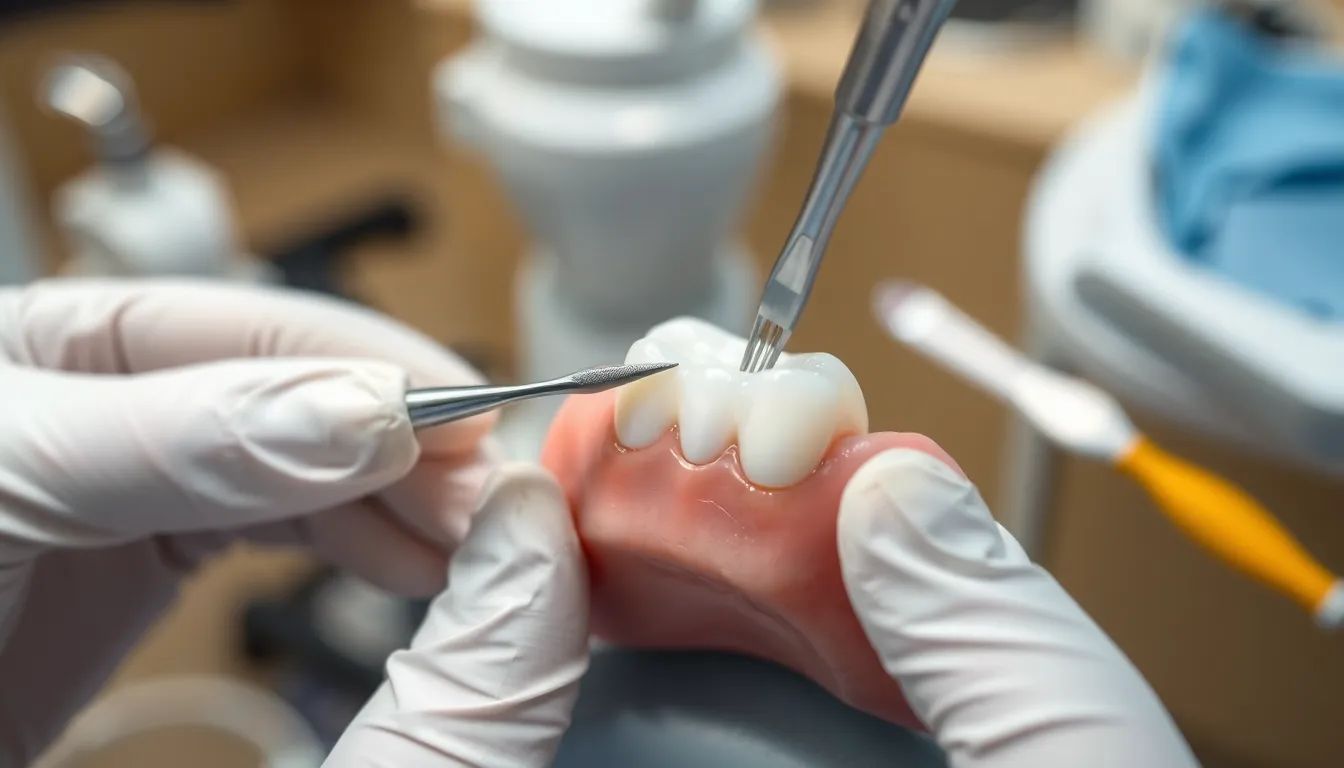
A dental inlay is a precise restoration that fits within the cusps (raised points) of your tooth’s chewing surface to repair moderate decay or damage. Unlike fillings that are molded directly in your mouth, inlays are custom-crafted in a laboratory to fit the exact dimensions of your cavity, preserving much more of your natural tooth structure than a crown would require.
Materials Used for Inlays
Dental inlays come in several high-quality materials that offer both durability and aesthetic benefits. Porcelain inlays provide the most natural appearance, matching your tooth color perfectly while resisting staining. Composite resin offers a more affordable tooth-colored option that bonds well with your natural tooth. Gold inlays, though less common today, remain the longest-lasting option with exceptional durability—many of Dr. Harris’s patients with gold inlays report they’re still functioning perfectly after 20+ years.
“I recently had a patient who was hesitant about getting an inlay because she thought it would be noticeable,” shares Dr. Todd B. Harris. “After choosing a porcelain inlay that matched her natural tooth shade, she was amazed that even she couldn’t tell which tooth had been restored when looking in the mirror.”
The Inlay Procedure
The inlay procedure typically requires two dental visits to complete the restoration properly. During your first appointment, the dentist removes the decayed portion of your tooth and shapes the cavity to prepare it for the inlay. Next, digital scans or physical impressions capture the exact dimensions of the prepared tooth, ensuring your inlay will fit perfectly.
Between appointments, you’ll receive a temporary filling to protect your tooth while a dental laboratory crafts your custom inlay. Your second visit involves removing the temporary filling, checking the fit of your new inlay, and permanently bonding it into place. The entire process preserves significantly more of your natural tooth structure compared to crown preparation, making inlays a conservative treatment option for appropriate cases.
Many patients appreciate that inlays don’t require the extensive tooth reduction that crowns demand. The precision fit also means fewer adjustments to your bite after placement, resulting in a more comfortable restoration experience overall.
What Is a Dental Crown?

A dental crown is a full-coverage restoration that completely encases a damaged or weakened tooth, providing protection, strength, and improved appearance. This comprehensive restoration is typically used for severe decay, fractures, or after root canal treatment when the entire visible portion of the tooth needs reinforcement.
Types of Dental Crowns
Dental crowns come in several materials, each offering different benefits for your exact needs. Porcelain crowns provide excellent aesthetics with their ceramic-based composition that mimics natural teeth. Zirconia crowns offer exceptional durability while maintaining a tooth-colored appearance, making them ideal for back teeth that endure important chewing forces. Porcelain-fused-to-metal (PFM) crowns combine strength with aesthetics by featuring a metal core with porcelain overlay. Gold crowns, though less common today due to their appearance, remain one of the most durable options with minimal wear on opposing teeth.
Dr. Harris often recommends porcelain or zirconia crowns for front teeth where aesthetics are paramount. “I’ve had patients transform their smiles with modern ceramic crowns,” he notes. “One patient, Sarah, had worn down her front teeth from years of grinding. After placing zirconia crowns, she couldn’t stop smiling at her reflection.”
The Crown Procedure
The dental crown process typically involves two appointments spaced a few weeks apart. During your first visit, the dentist prepares your tooth by removing decay and reshaping it to create space for the crown. This preparation involves reducing the tooth structure on all sides and the chewing surface to accommodate the thickness of the crown material. Your dentist then takes precise impressions of your prepared tooth, which are sent to a dental laboratory for custom fabrication of your crown. A temporary crown protects your tooth while the permanent restoration is being created.
At your second appointment, the dentist removes the temporary crown and carefully checks the fit, color, and appearance of your new permanent crown. After making any necessary adjustments, the crown is permanently cemented onto your prepared tooth, restoring both function and appearance. The entire procedure is performed under local anesthesia to ensure your comfort throughout the process.
Inlay vs Crown: Key Differences
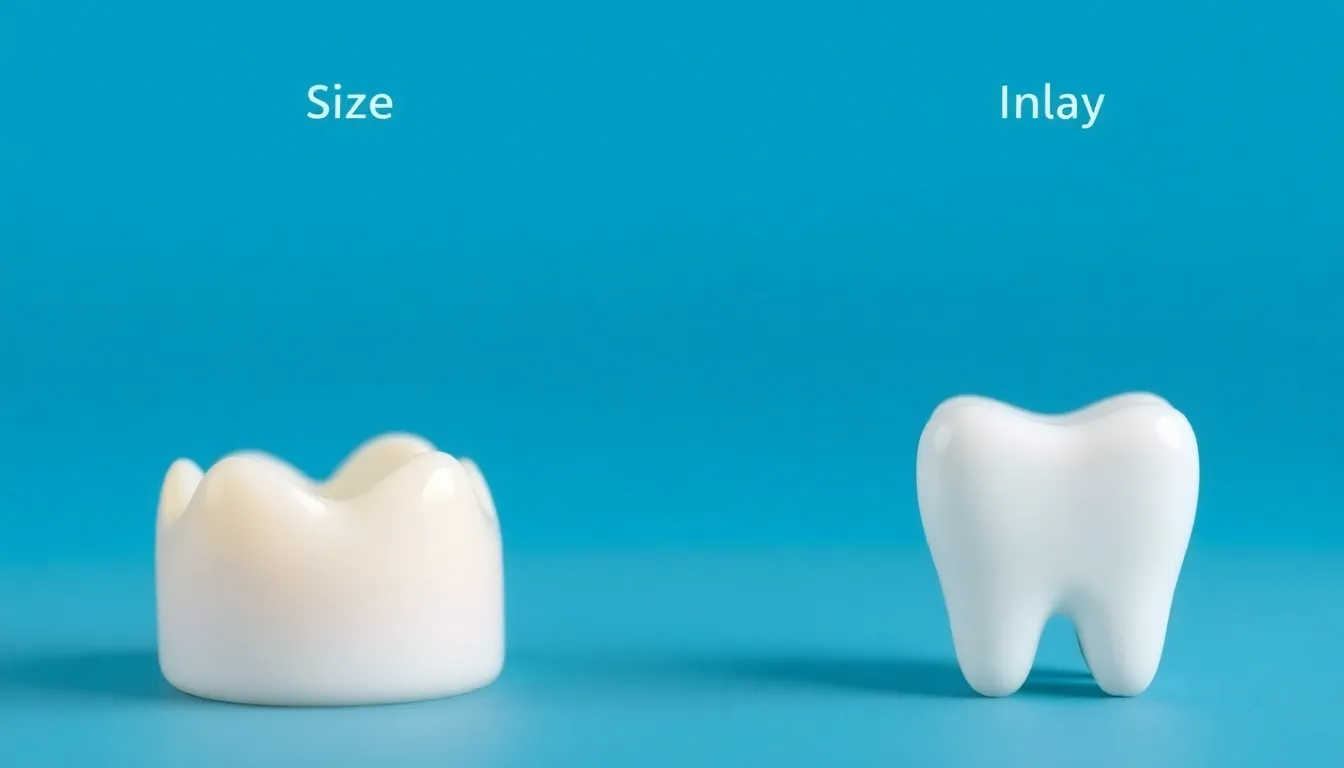
Understanding the fundamental differences between inlays and crowns helps you make informed decisions about your dental restoration options. These two treatments vary significantly in several important aspects that directly impact your dental health and financial considerations.
Extent of Tooth Coverage
Inlays fit precisely within the cusps of your tooth, addressing moderate decay or damage without extending over the tooth’s raised edges. They’re specifically designed to fill the area between the cusps while preserving the natural tooth structure around them. Dental professionals often recommend inlays when damage is contained to the chewing surface but requires more than a simple filling.
Crowns provide complete protection by covering the entire visible portion of your tooth above the gum line. This full-coverage approach makes crowns ideal for severely damaged teeth, extensively decayed teeth, or teeth that have undergone root canal treatment. Your dentist might suggest a crown when a tooth needs comprehensive reinforcement to prevent further damage or fracture.
Dr. Harris notes, “I’ve had patients who were initially hesitant about getting a crown, believing an inlay would be sufficient. In cases of extensive damage, but, the protection a crown offers can prevent the need for extraction later on, which eventually saves both the tooth and additional expenses.”
Cost Comparison
Inlays typically cost less than crowns due to their conservative nature and smaller coverage area. Current pricing shows inlays averaging around €253, making them a more budget-friendly option for moderate tooth repairs. The cost varies based on the material chosen and your exact dental needs.
Crowns come with a higher price tag, averaging about €298, reflecting their comprehensive coverage and more complex preparation process. The additional expense stems from the greater amount of material used, the extensive tooth preparation required, and the technical expertise needed for proper fitting. Insurance coverage for both procedures varies, so checking your dental benefits before proceeding is advisable.
A patient recently shared, “I chose an inlay for my molar because it was more affordable, and five years later, it’s still performing perfectly. For patients with budget constraints but moderate dental issues, inlays can be an excellent value proposition.”
Durability and Longevity
Inlays offer impressive durability, typically lasting around 10 years with proper care. They’re crafted from resilient materials such as porcelain, composite, or gold, providing excellent strength for moderate tooth damage. Porcelain inlays blend seamlessly with your natural teeth while offering important durability for daily use.
Crowns generally demonstrate superior longevity, with lifespans ranging from 10 to 30 years depending on material quality and oral hygiene practices. Materials like zirconia, high-quality porcelain, and gold deliver exceptional durability for teeth requiring full coverage protection. The comprehensive nature of crowns provides enhanced structural support that helps withstand years of chewing forces.
When to Choose an Inlay Over a Crown
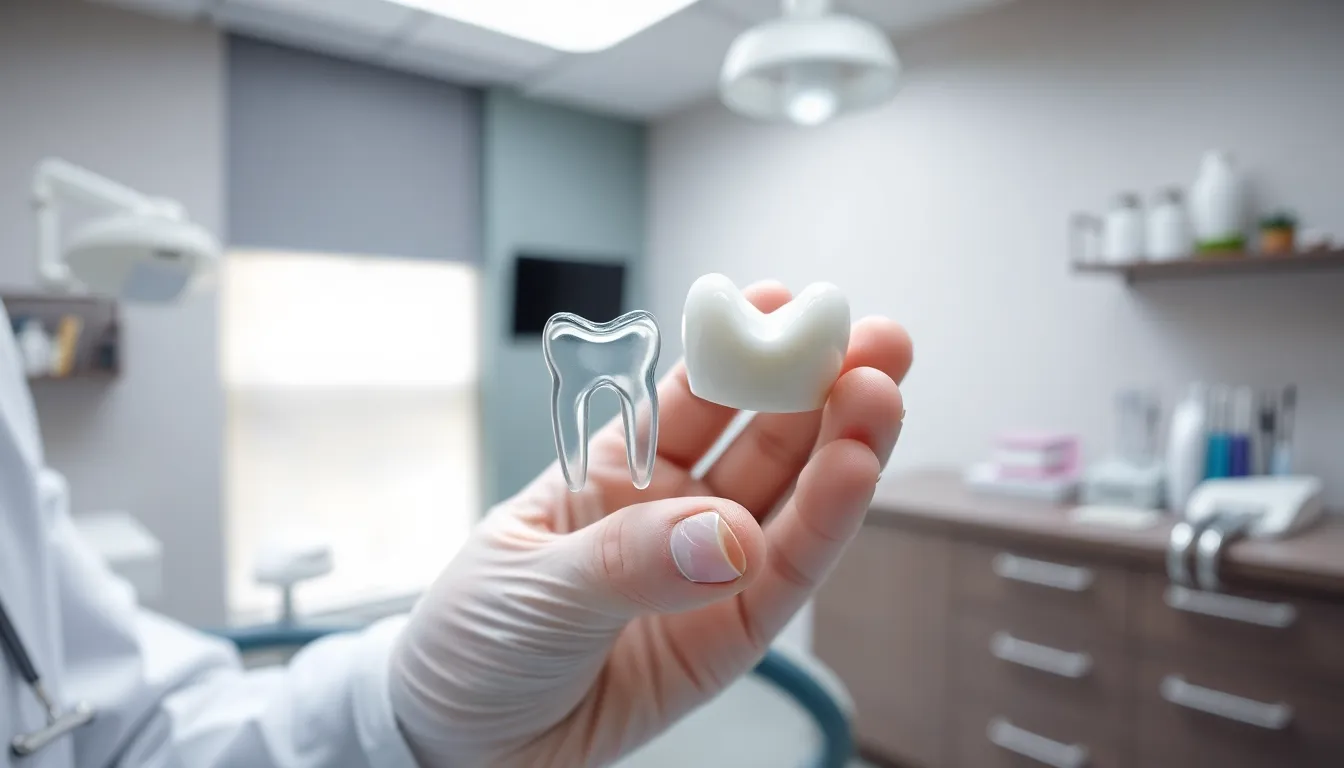
Inlays represent the perfect middle ground for teeth with moderate damage confined to the cusps. Your dentist typically recommends an inlay when the cavity is too large for a standard filling but doesn’t warrant the extensive coverage of a crown. Preserving natural tooth structure remains one of the primary benefits of choosing an inlay, as they require significantly less tooth reduction than crowns.
Best Scenarios for Inlays
Moderate decay contained within the cusps makes an ideal case for inlay placement. Teeth with structurally sound foundations but damaged chewing surfaces benefit tremendously from this conservative approach. Patients seeking aesthetically pleasing restorations often prefer porcelain or composite inlays that blend seamlessly with their natural teeth. Cost-conscious individuals appreciate that inlays generally run less expensive than crowns, with the added benefit of maintaining more original tooth material.
Dr. Todd B. Harris notes, “I’ve seen countless patients who were initially recommended crowns elsewhere but were perfect candidates for inlays. One patient with moderate decay on her upper molar maintained 85% of her natural tooth structure through an inlay restoration, which has now lasted over 12 years with excellent function.”
When Crowns Become Necessary
Extensive tooth damage extending beyond the cusps necessitates crown placement for proper protection. Root canal treated teeth almost always require crowns due to their increased fragility and susceptibility to fracture. Teeth with multiple large existing fillings lack sufficient structural integrity and benefit from the full coverage a crown provides. Severely fractured teeth can’t be adequately restored with inlays alone and demand the comprehensive protection crowns offer.
The decision between an inlay and crown eventually centers on preserving as much healthy tooth structure as possible while ensuring adequate protection and function. Your dentist evaluates factors including decay location, remaining tooth strength, and functional demands before making a recommendation customized to your exact situation.
When a Crown Is the Better Option
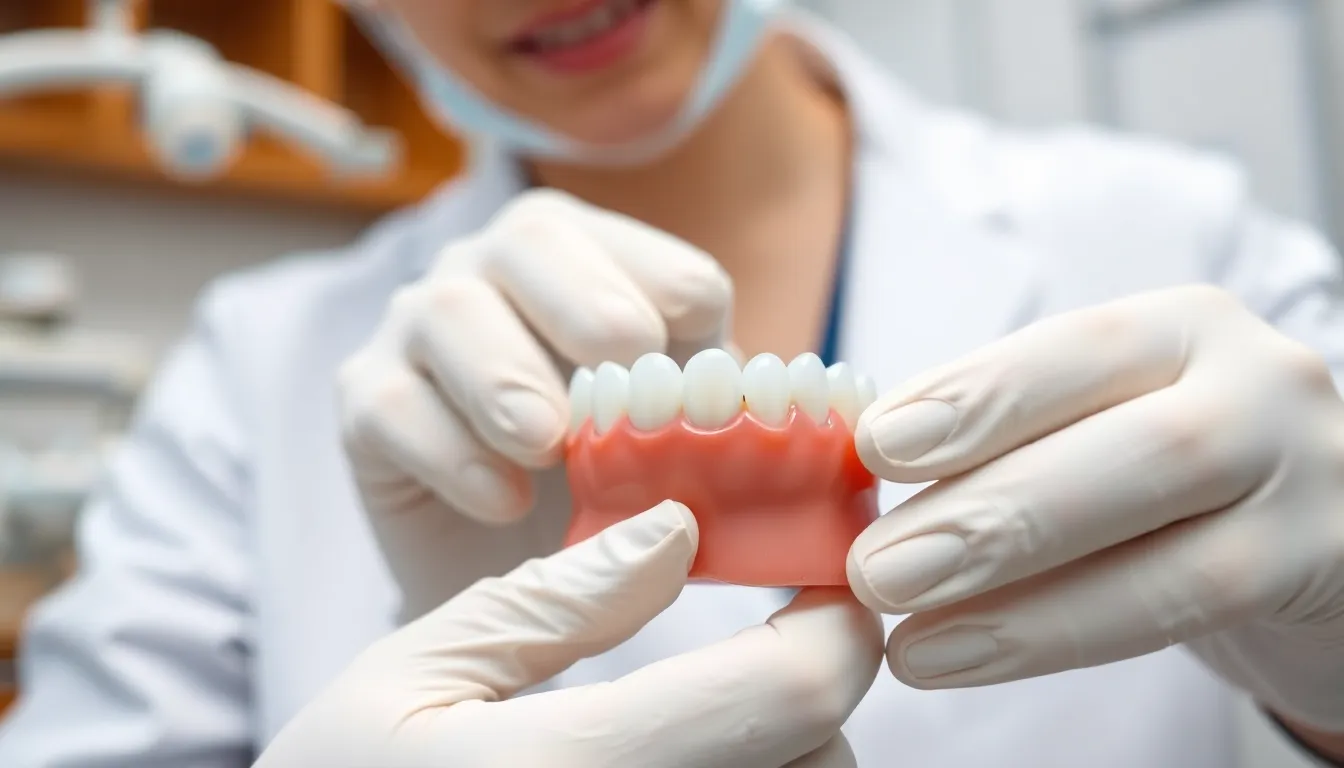
Dental crowns become the optimal choice when tooth damage extends beyond what an inlay can effectively repair. Extensive decay that involves multiple cusps or affects a large portion of your tooth structure typically requires a crown’s full coverage protection. Root canal-treated teeth benefit significantly from crowns because these teeth become more brittle over time and need comprehensive reinforcement to prevent fractures.
Severe fractures or cracks that compromise the structural integrity of your tooth make crowns necessary rather than optional. Teeth that have lost important structure due to trauma or multiple previous restorations gain renewed strength and function with crown placement. Aesthetic concerns involving tooth shape, severe discoloration, or alignment issues can also be effectively addressed with crowns rather than inlays.
“I had a patient who delayed getting a crown on a cracked molar, thinking an inlay might be sufficient,” shares Dr. Todd B. Harris. “Unfortunately, the tooth fractured further during a meal, requiring a more complex and costly treatment. This case reinforced why I recommend crowns for structurally compromised teeth—prevention is always more conservative than emergency treatment.”
Crowns provide superior protection for teeth bearing heavy chewing forces, particularly for patients with bruxism (teeth grinding). Teeth serving as anchors for dental bridges absolutely require the strength and stability that only crowns can offer. The complete coverage a crown provides creates a protective shield against further decay and damage, especially valuable for patients with high cavity risk or those struggling with oral hygiene maintenance.
Materials like zirconia and porcelain-fused-to-metal crowns offer exceptional durability for back teeth where strength is paramount. Modern all-ceramic options deliver both resilience and natural aesthetics, making them appropriate for visible front teeth requiring full coverage restoration.
Maintenance and Care Tips
Proper maintenance significantly extends the lifespan of your dental restorations. Both inlays and crowns require regular care to function optimally and maintain their appearance for years to come. Establishing good oral hygiene habits protects your investment and prevents new decay from forming around restoration margins.
Brushing twice daily with fluoride toothpaste removes plaque and debris from your restored teeth. Flossing once daily cleans the areas between teeth and around restoration edges where bacteria often accumulate. Regular dental check-ups every six months allow your dentist to professionally clean and examine your restorations for any signs of wear or damage.
Avoid chewing ice, hard candies, or using your teeth as tools to prevent chips or cracks in your dental work. Many patients experience temporary sensitivity to hot or cold temperatures after getting new restorations; contact your dentist if this persists beyond a few weeks. Wearing a custom night guard protects both natural teeth and restorations if you grind or clench during sleep.
Dr. Todd B. Harris notes, “I’ve seen patients extend the life of their inlays and crowns by 5-7 years simply by following proper maintenance protocols. One patient maintained her porcelain inlays for over 15 years through diligent care, even though initially being told they might only last a decade.”
Prompt attention to any issues with your restoration prevents further complications. If your inlay or crown feels loose, chips, or causes pain, schedule an appointment immediately. Addressing minor problems early often prevents the need for complete replacement of the restoration.
Materials impact maintenance requirements, with gold restorations typically requiring less intensive care than porcelain options. Porcelain and ceramic restorations, while aesthetically superior, may require more careful attention to prevent chipping. Special cleaning tools like interdental brushes clean hard-to-reach areas around larger restorations.
Food choices affect restoration longevity, with sticky candies and caramels potentially dislodging inlays or temporary crowns. Coffee, tea, and red wine can stain porcelain restorations over time, though professional cleanings help maintain their original shade. Tobacco use significantly diminishes restoration appearance and can compromise the supporting tooth structure.
With proper care, inlays typically last 10-15 years, while crowns can last 5-15 years or longer depending on material choice and maintenance. Zirconia and gold crowns often demonstrate the greatest longevity, sometimes exceeding 20 years with excellent care.
Conclusion
Choosing between an inlay and a crown eventually depends on your exact dental needs. Inlays offer a conservative approach for moderate decay while preserving more natural tooth structure at a lower cost. Crowns provide comprehensive protection for extensively damaged teeth requiring full coverage.
Your dentist will evaluate factors like decay extent remaining tooth structure and your long-term oral health goals before recommending the ideal solution. Both restorations can serve you well for a decade or longer with proper maintenance.
Remember that regular brushing flossing and dental check-ups are essential regardless of which option you choose. By understanding these restoration types you’ll be better equipped to participate in decisions about your dental health and achieve lasting results that keep you smiling confidently.
Frequently Asked Questions
What is the main difference between dental inlays and crowns?
Dental inlays fit within the cusps of a tooth’s chewing surface, while crowns cover the entire visible portion of the tooth above the gum line. Inlays preserve more of your natural tooth structure as they’re designed to fill cavities without encasing the whole tooth. Crowns provide maximum protection by completely covering the tooth, making them ideal for extensively damaged teeth.
How long do dental inlays and crowns last?
With proper care, dental inlays typically last 10-15 years. Crowns can last anywhere from 10-30 years depending on the material used and your oral hygiene practices. Regular dental check-ups, good oral hygiene, and avoiding habits like chewing hard objects can significantly extend the lifespan of both restorations.
Which costs more – an inlay or a crown?
Crowns generally cost more than inlays. The average cost of an inlay is around €253, while crowns average about €298. The price difference reflects the amount of material used, laboratory work required, and the extent of tooth preparation needed. Insurance coverage varies, so check with your provider about potential benefits.
When should I choose an inlay instead of a crown?
Choose an inlay when you have moderate decay or damage confined to the cusps of your tooth but the overall tooth structure remains sound. Inlays are ideal when you want to preserve as much natural tooth as possible while still addressing decay. They’re a conservative approach that balances restoration needs with tooth preservation.
What materials are used for dental inlays?
Dental inlays can be made from porcelain for a natural appearance, composite resin for an affordable option, or gold for exceptional durability. Porcelain inlays match your tooth color for a seamless appearance. Gold inlays offer superior longevity but are more visible. The material choice depends on the location of the tooth and your aesthetic preferences.
How is a crown procedure different from an inlay procedure?
Both procedures typically require two appointments. For inlays, the first visit involves cavity preparation and taking impressions, while the second involves bonding the custom inlay. Crown procedures require more extensive tooth preparation, with a temporary crown placed during the first visit. The second visit involves removing the temporary crown and cementing the permanent one.
Are crowns always necessary after root canal treatment?
Crowns are highly recommended after root canal treatment, especially for back teeth. Root canal-treated teeth become more brittle and susceptible to fractures. A crown provides essential protection by encasing the entire tooth, distributing biting forces evenly, and preventing potential fractures that could lead to tooth loss.
How do I maintain my dental inlay or crown?
Maintain both restorations with regular brushing using fluoride toothpaste and daily flossing. Avoid chewing hard items like ice or opening packages with your teeth. Attend regular dental check-ups for professional cleaning and evaluation. Limit consumption of staining foods and beverages, especially with porcelain restorations. Consider wearing a nightguard if you grind your teeth.
Can inlays or crowns get cavities?
While the restorations themselves cannot decay, the natural tooth structure around them remains susceptible to cavities. Poor oral hygiene can lead to decay at the margins where the restoration meets your natural tooth. Regular brushing, flossing, and dental check-ups are essential to prevent secondary decay around inlays and crowns.
Which restoration provides better strength – inlays or crowns?
Crowns provide superior strength and protection because they completely encase the tooth, distributing biting forces evenly. Inlays strengthen teeth better than traditional fillings but offer less reinforcement than crowns. For severely damaged teeth or those under heavy chewing forces, crowns typically provide the necessary structural support to prevent fractures.

